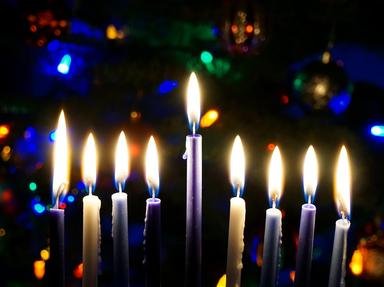
Jewish Holidays Throughout The Year Quiz
Arrange ten important Jewish holidays. Start with the Jewish New Year and follow in the order in which they occur throughout the year.
An ordering quiz
by wellenbrecher.
Estimated time: 3 mins.

| What's the Correct Order? | Choices |
| 1. (New Year) | Shavuot |
| 2. | Hanukkah |
| 3. | Rosh Hashanah |
| 4. | Yom Kippur |
| 5. (Lights) | Pesach |
| 6. (Trees) | Simchat Torah |
| 7. | Purim |
| 8. | Tisha B'Av |
| 9. (Weeks) | Tu Bishvat |
| 10. | Sukkot |